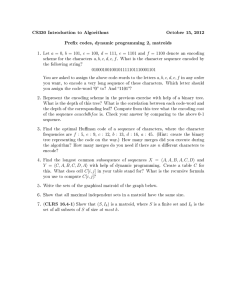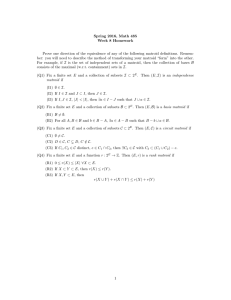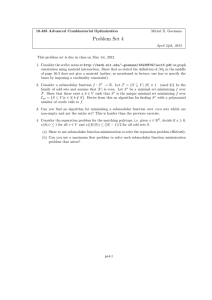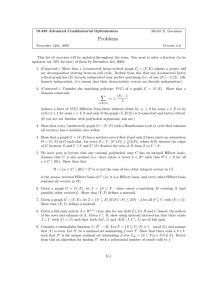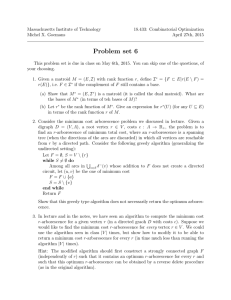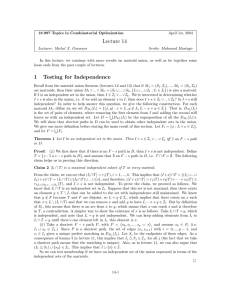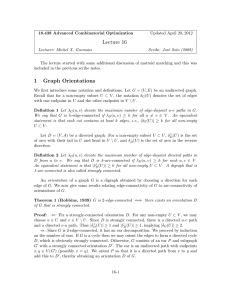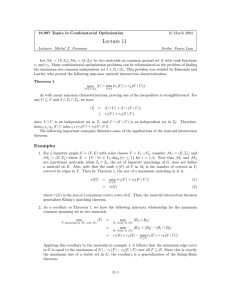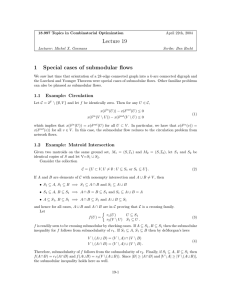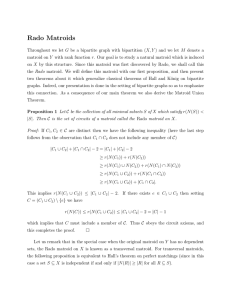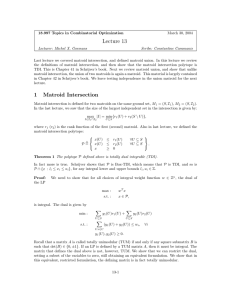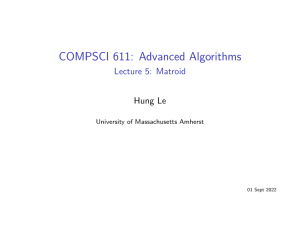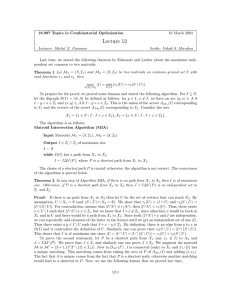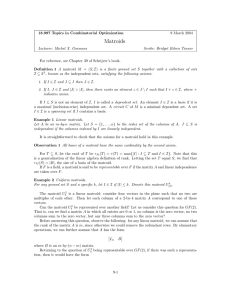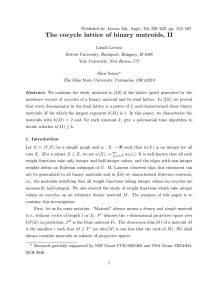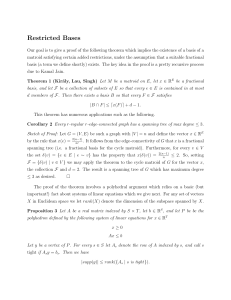Problem Set 2
advertisement
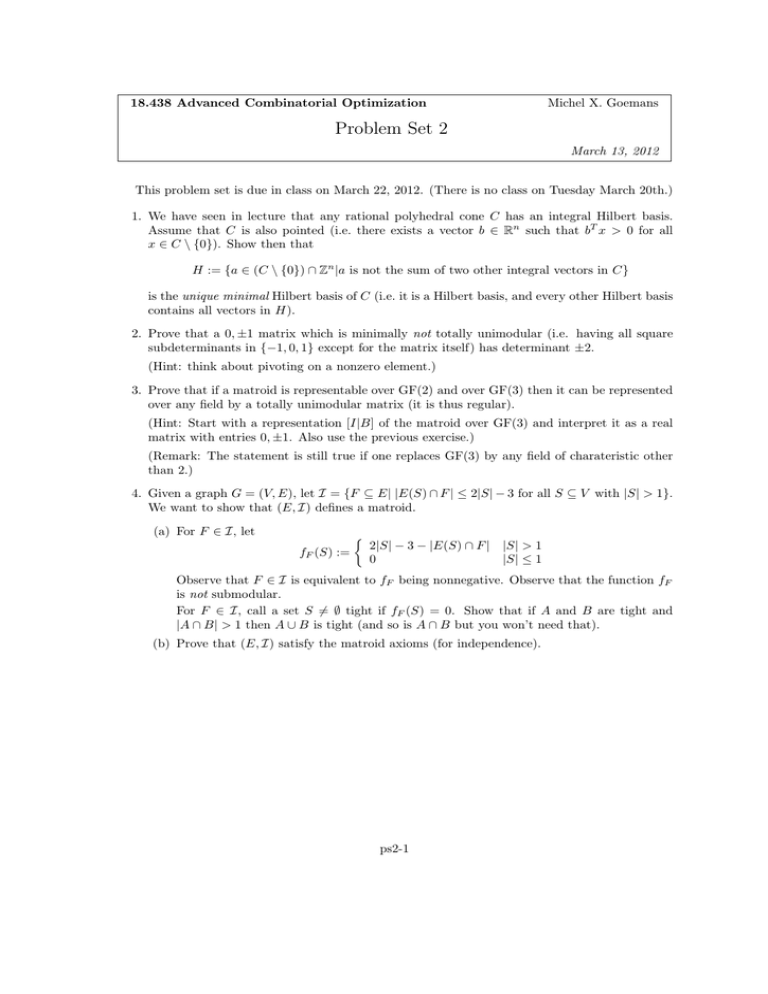
18.438 Advanced Combinatorial Optimization
Michel X. Goemans
Problem Set 2
March 13, 2012
This problem set is due in class on March 22, 2012. (There is no class on Tuesday March 20th.)
1. We have seen in lecture that any rational polyhedral cone C has an integral Hilbert basis.
Assume that C is also pointed (i.e. there exists a vector b ∈ Rn such that bT x > 0 for all
x ∈ C \ {0}). Show then that
H := {a ∈ (C \ {0}) ∩ Zn |a is not the sum of two other integral vectors in C}
is the unique minimal Hilbert basis of C (i.e. it is a Hilbert basis, and every other Hilbert basis
contains all vectors in H).
2. Prove that a 0, ±1 matrix which is minimally not totally unimodular (i.e. having all square
subdeterminants in {−1, 0, 1} except for the matrix itself) has determinant ±2.
(Hint: think about pivoting on a nonzero element.)
3. Prove that if a matroid is representable over GF(2) and over GF(3) then it can be represented
over any field by a totally unimodular matrix (it is thus regular).
(Hint: Start with a representation [I|B] of the matroid over GF(3) and interpret it as a real
matrix with entries 0, ±1. Also use the previous exercise.)
(Remark: The statement is still true if one replaces GF(3) by any field of charateristic other
than 2.)
4. Given a graph G = (V, E), let I = {F ⊆ E| |E(S) ∩ F | ≤ 2|S| − 3 for all S ⊆ V with |S| > 1}.
We want to show that (E, I) defines a matroid.
(a) For F ∈ I, let
fF (S) :=
2|S| − 3 − |E(S) ∩ F | |S| > 1
0
|S| ≤ 1
Observe that F ∈ I is equivalent to fF being nonnegative. Observe that the function fF
is not submodular.
For F ∈ I, call a set S 6= ∅ tight if fF (S) = 0. Show that if A and B are tight and
|A ∩ B| > 1 then A ∪ B is tight (and so is A ∩ B but you won’t need that).
(b) Prove that (E, I) satisfy the matroid axioms (for independence).
ps2-1

